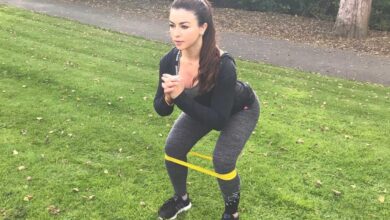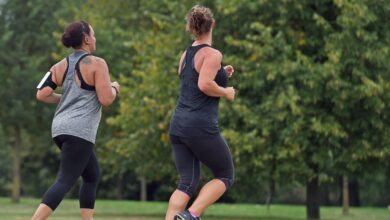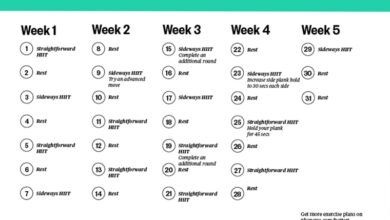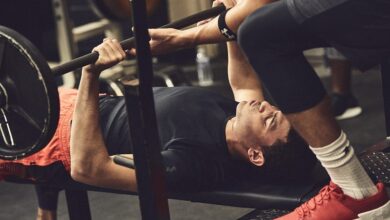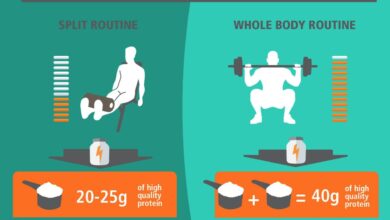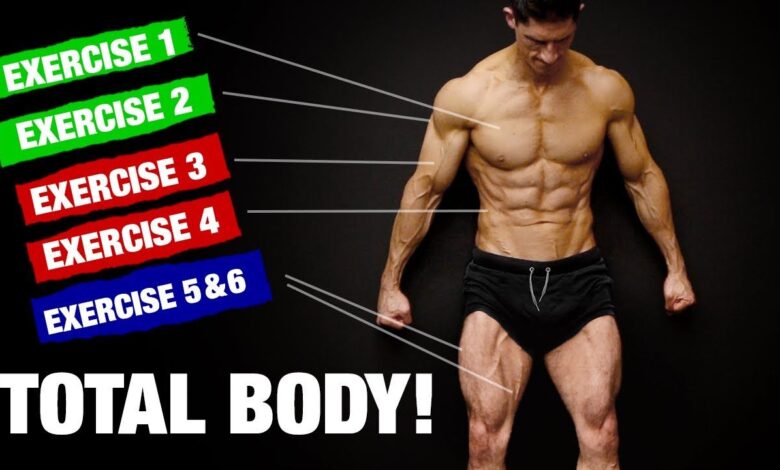
10 Move Full Body Workout at Home: Get Fit Without the Gym
Tired of the gym? Craving a quick, effective workout you can do from the comfort of your own home? Then “10 Move Full Body Workout at Home” is for you! This routine delivers a full-body burn in just 30 minutes, using minimal equipment and maximizing your time.
We’ll explore the benefits of full-body workouts, the convenience of home workouts, and the specific moves in this 10-exercise routine. Get ready to feel the burn, build strength, and improve your overall fitness – all without leaving your living room.
Full-Body Workouts at Home: A Comprehensive Guide
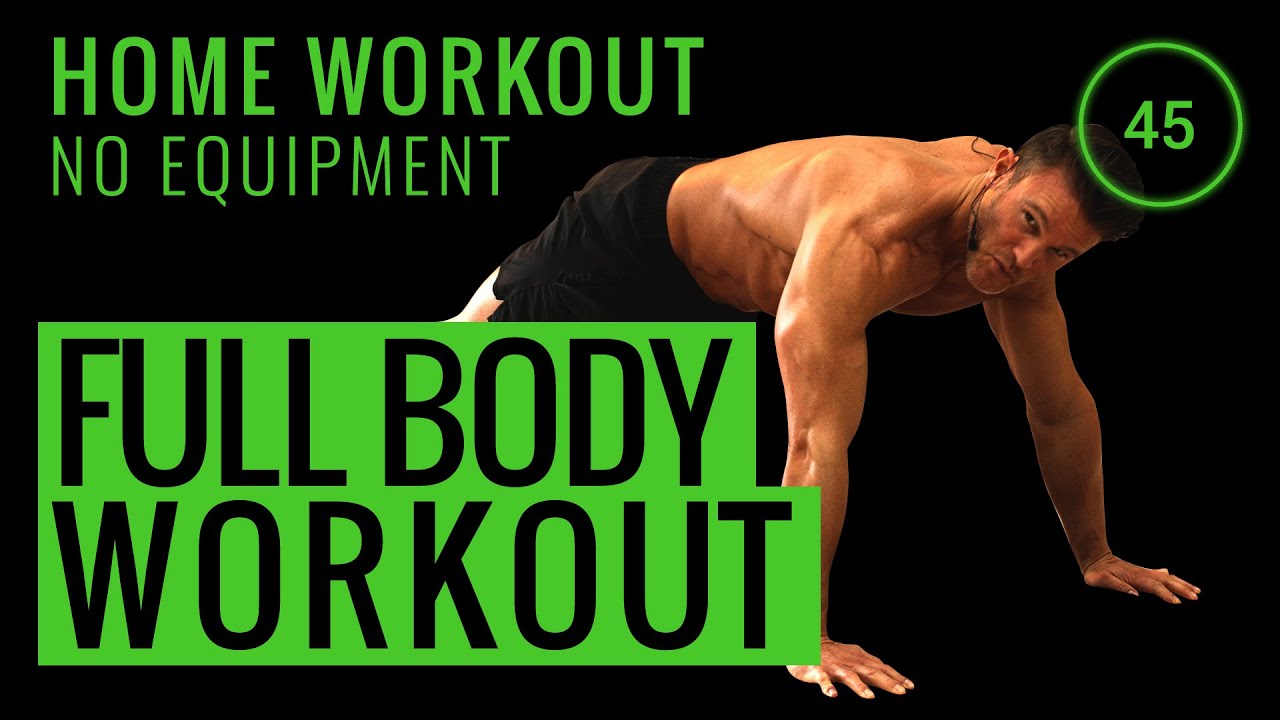
Full-body workouts offer numerous benefits for overall fitness and well-being. They engage multiple muscle groups simultaneously, leading to increased calorie burn, improved muscle growth, and enhanced cardiovascular health. Additionally, these workouts are time-efficient, allowing you to achieve a comprehensive workout in a shorter period.
The Importance of Home Workouts
Home workouts provide a convenient and accessible option for individuals seeking to maintain their fitness routine. They eliminate the need for gym memberships, travel time, and potential exposure to crowds. With a minimal investment in equipment, you can create a personalized workout program that fits your schedule and preferences.
Overview of the 10-Move Full-Body Workout
This workout program comprises ten effective exercises that target major muscle groups throughout the body. The exercises are designed to be adaptable to different fitness levels, allowing you to modify them based on your abilities. The workout emphasizes proper form and technique to maximize results and minimize the risk of injury.
Workout Routine
This section details a sample 10-move full-body workout routine you can follow at home. This routine targets all major muscle groups and can be modified to suit your fitness level.
Workout Routine
This routine is designed to be performed three times a week with rest days in between.
| Exercise | Description | Sets | Reps |
|---|---|---|---|
| Squats | Stand with feet shoulder-width apart, toes slightly pointed out. Lower your hips as if sitting in a chair, keeping your back straight and core engaged. Push through your heels to return to the starting position. | 3 | 10-12 |
| Push-ups | Place your hands shoulder-width apart on the floor, fingers pointing forward. Lower your body until your chest touches the floor, keeping your body in a straight line. Push back up to the starting position. | 3 | 8-10 |
| Lunges | Stand with feet hip-width apart. Take a large step forward with your right leg, bending both knees to 90 degrees. Ensure your front knee doesn’t go past your toes. Push off your right foot to return to the starting position and repeat with your left leg. | 3 | 10-12 per leg |
| Plank | Start in a push-up position with your forearms on the floor and your body in a straight line from head to heels. Hold this position for 30-60 seconds. | 3 | 30-60 seconds |
| Crunches | Lie on your back with knees bent and feet flat on the floor. Place your hands behind your head and lift your upper body towards your knees, engaging your core. Lower back down slowly. | 3 | 15-20 |
| Bird Dog | Start on your hands and knees. Extend your right arm and left leg out simultaneously, keeping your back straight and core engaged. Hold for a few seconds, then return to the starting position and repeat on the other side. | 3 | 10-12 per side |
| Jump Squats | Stand with feet shoulder-width apart. Perform a squat, then explosively jump up, extending your arms overhead. Land softly and immediately squat again. | 3 | 10-12 |
| Burpees | Stand with feet shoulder-width apart. Squat down and place your hands on the floor. Kick your feet back into a plank position. Do a push-up. Return to plank position, then jump your feet forward and stand up. | 3 | 8-10 |
| Mountain Climbers | Start in a plank position. Bring your right knee towards your chest, then quickly switch to your left knee. Continue alternating legs in a running motion. | 3 | 30-60 seconds |
| Side Plank | Lie on your side with your forearm on the floor and your body in a straight line. Raise your hips off the floor, engaging your core. Hold this position for 30-60 seconds. Repeat on the other side. | 3 | 30-60 seconds per side |
Exercise Examples: 10 Move Full Body Workout At Home
A well-rounded full-body workout should target all major muscle groups. Here are 10 exercises you can do at home with minimal or no equipment.
Bodyweight Exercises
These exercises utilize your body weight as resistance, making them accessible to everyone.
- Squats:Stand with your feet shoulder-width apart, toes slightly pointed out. Lower your hips as if sitting in a chair, keeping your back straight and core engaged. Push through your heels to return to the starting position.
Form:Ensure your knees track over your toes and your back remains straight throughout the movement.
- Push-ups:Start in a plank position, with hands shoulder-width apart and your body in a straight line from head to heels. Lower your chest towards the floor, bending your elbows at a 45-degree angle. Push back up to the starting position.
Form:Maintain a straight line from head to heels and avoid letting your hips sag or your back arch.
- Lunges:Step forward with one leg, bending both knees to 90 degrees. Your front knee should be directly over your ankle and your back knee should be hovering just above the ground. Push off with your front foot to return to the starting position.
Form:Ensure your front knee doesn’t extend past your toes and your back knee doesn’t touch the ground.
- Plank:Start in a push-up position, with your forearms on the ground and your body in a straight line from head to heels. Hold this position, engaging your core and keeping your body stable.
Form:Maintain a straight line from head to heels, engaging your core and glutes to prevent your hips from sagging.
- Glute Bridges:Lie on your back with your knees bent and feet flat on the floor. Lift your hips off the ground, squeezing your glutes and keeping your core engaged. Lower your hips back down to the starting position.
Form:Maintain a straight line from your shoulders to your knees and engage your core throughout the movement.
Exercises with Minimal Equipment
These exercises require minimal equipment, such as a chair or a set of dumbbells.
- Chair Dips:Place your hands shoulder-width apart on the edge of a sturdy chair. Extend your legs in front of you, keeping your back straight. Lower your body down until your chest touches the chair, then push back up to the starting position.
Form:Keep your elbows close to your body and your back straight throughout the movement.
- Dumbbell Rows:Stand with your feet shoulder-width apart, holding a dumbbell in each hand. Bend at the waist, keeping your back straight and core engaged. Let the dumbbells hang towards the floor. Pull the dumbbells up towards your chest, squeezing your shoulder blades together.
Lower the dumbbells back to the starting position.
Form:Maintain a straight back and avoid swinging your body during the movement.
A 10-move full body workout at home is a great way to get in shape and stay healthy, but sometimes it’s easy to get stuck in a rut. If you’re feeling unmotivated, it might be time to shake things up.
A great place to start is with your meal prep – check out 6 proven ways to get out of a meal prep plateau for some inspiration! Once you’ve got your nutrition in check, you’ll be ready to tackle those 10 moves with renewed energy.
- Dumbbell Bicep Curls:Stand with your feet shoulder-width apart, holding a dumbbell in each hand. Keeping your elbows close to your sides, curl the dumbbells up towards your shoulders. Lower the dumbbells back to the starting position.
Form:Keep your elbows close to your body and avoid swinging your arms during the movement.
- Dumbbell Triceps Extensions:Stand with your feet shoulder-width apart, holding a dumbbell in one hand. Keeping your upper arm close to your head, extend your arm straight up, then lower the dumbbell back down to the starting position. Repeat on the other side.
Form:Keep your upper arm close to your head and avoid swinging your arm during the movement.
- Dumbbell Overhead Press:Stand with your feet shoulder-width apart, holding a dumbbell in each hand. Raise the dumbbells up over your head, keeping your elbows slightly bent. Lower the dumbbells back down to the starting position.
Form:Maintain a straight back and avoid swinging your arms during the movement.
Cool-down
A cool-down is an essential part of any workout, and it’s especially important after a full-body session. It helps your body gradually transition from a high-intensity state to rest, reducing muscle soreness and preventing injury.
Static Stretches
Static stretches are held for an extended period, allowing your muscles to lengthen and relax. This can help improve flexibility, range of motion, and reduce muscle tension.
| Exercise | Description | Hold Time | Sets |
|---|---|---|---|
| Standing Quad Stretch | Grab your right foot with your right hand and pull your heel towards your glutes. Keep your back straight and your knee aligned with your toes. | 30 seconds | 1 |
| Hamstring Stretch | Sit on the floor with your legs extended in front of you. Reach towards your toes, keeping your back straight. | 30 seconds | 1 |
| Calf Stretch | Stand facing a wall with your feet shoulder-width apart. Lean forward, keeping your back straight and your heels on the ground. | 30 seconds | 1 |
| Chest Stretch | Interlace your fingers behind your back, keeping your arms straight. Lift your arms up and back, pushing your chest forward. | 30 seconds | 1 |
| Shoulder Stretch | Grab your right arm with your left hand and pull it across your chest. Keep your elbow below shoulder height. | 30 seconds | 1 |
Equipment Recommendations
You don’t need a fancy gym membership or a ton of expensive equipment to get a great full-body workout at home. With a few essential items, you can effectively target all major muscle groups and achieve your fitness goals.
Essential Equipment
This section discusses the basic equipment needed for a home workout routine.
- Resistance Bands:These versatile tools provide resistance for a wide range of exercises, targeting various muscle groups. They are lightweight, portable, and affordable, making them a great addition to any home gym.
- Dumbbells:Dumbbells are essential for building strength and muscle mass.
Start with a set of light to medium weights, and gradually increase the weight as you get stronger.
- Yoga Mat:A yoga mat provides cushioning and support for floor exercises, protecting your joints and providing a comfortable surface to work on.
- Stability Ball:This inflatable ball adds an element of instability to exercises, challenging your core muscles and improving balance.
Alternative Equipment Options
This section provides alternative options for equipment that may not be readily available.
Sometimes, finding the motivation to get a full-body workout in at home can be a struggle. But with just 10 moves, you can target all your major muscle groups without needing any fancy equipment. And while you’re working on those squats and lunges, it’s worth remembering that even registered dietitians, the experts on nutrition, have some surprising takeaways about their field, as you can read in this insightful article 3 surprising takeaways about being a registered dietitian.
So, get ready to sweat, and then get ready to learn something new about the world of nutrition!
- Water Bottles:Filled water bottles can be used as makeshift weights for exercises like bicep curls and tricep extensions.
- Canned Goods:Canned goods can serve as heavier weights for more challenging exercises.
- Towel:A towel can be used as a resistance band for exercises like rows and pull-ups.
- Chair:A sturdy chair can be used for tricep dips, step-ups, and other exercises.
Benefits of Using Specific Equipment
This section highlights the benefits of using specific equipment.
- Resistance Bands:Resistance bands provide a constant tension throughout the range of motion, effectively engaging muscles and enhancing strength gains. They also allow for a greater range of motion compared to traditional weights.
- Dumbbells:Dumbbells offer a more controlled and isolated resistance, allowing for targeted muscle development and improved form.
They also allow for progressive overload, gradually increasing the weight to challenge your muscles and promote growth.
- Yoga Mat:A yoga mat provides a comfortable and supportive surface for exercises, reducing the risk of injury and improving overall comfort during workouts.
- Stability Ball:The instability of the stability ball engages core muscles, improving balance, coordination, and stability. It also adds a unique challenge to traditional exercises, enhancing muscle activation and overall effectiveness.
Variations and Modifications
The beauty of home workouts lies in their adaptability. You can easily tailor the exercises to your fitness level and goals. Whether you’re a beginner or an advanced exerciser, there are ways to make the workout more challenging or easier.
Modifications for Beginners and Advanced Individuals
Beginners can start with simpler variations of the exercises, using lighter weights or no weights at all. They can also reduce the number of repetitions or sets. Advanced individuals can increase the intensity by using heavier weights, adding more repetitions or sets, or incorporating more challenging variations of the exercises.
Increasing the Intensity and Challenge, 10 move full body workout at home
Here are some ways to increase the intensity and challenge of your workout:* Increase the weight.This is the most obvious way to make the workout more challenging. You can use heavier dumbbells, resistance bands, or even your own body weight.
- Increase the repetitions.Instead of doing 10 repetitions of each exercise, try doing 12 or 15.
- Increase the sets.Instead of doing 3 sets of each exercise, try doing 4 or 5.
- Reduce the rest time between sets.This will keep your heart rate elevated and make the workout more challenging.
- Add plyometric exercises.Plyometrics are exercises that involve explosive movements, such as jumping jacks or box jumps. These exercises can help to improve your power and explosiveness.
- Incorporate interval training.Interval training involves alternating between periods of high-intensity exercise and low-intensity exercise. This can help to improve your cardiovascular fitness and burn more calories.
Alternative Exercises for Limitations or Injuries
If you have any limitations or injuries, you can modify the exercises or choose alternative exercises. * For knee problems:Avoid exercises that put stress on your knees, such as squats and lunges. Instead, try exercises like leg presses, hamstring curls, and calf raises.
For back problems Avoid exercises that put stress on your back, such as deadlifts and overhead presses. Instead, try exercises like rows, planks, and abdominal crunches.
For shoulder problems
A quick 10-move full body workout at home can be a great way to get your blood flowing before the big Thanksgiving feast. After all, you’ll want to have plenty of energy to enjoy all the delicious food, and maybe even help with the clean-up.
Speaking of food, I recently found a great article on 5 ways to fill your thanksgiving table with color that has some great tips for making your Thanksgiving table a visual feast. So, get your workout in, then get ready to eat!
For wrist problems Avoid exercises that put stress on your wrists, such as push-ups and bicep curls. Instead, try exercises like chest presses, rows, and squats.
For ankle problems Avoid exercises that put stress on your ankles, such as jumping jacks and lunges. Instead, try exercises like leg presses, hamstring curls, and calf raises.You can also use props, such as a chair or a wall, to modify the exercises.
For example, you can do chair squats or wall push-ups.
Nutrition and Recovery
Fueling your body with the right nutrients is crucial for optimal workout recovery. Proper nutrition helps repair muscle tissue, replenish energy stores, and supports overall health, enhancing your ability to perform at your best in future workouts.
Importance of Proper Nutrition
Adequate nutrition plays a vital role in muscle recovery and overall well-being. Consuming a balanced diet rich in essential nutrients helps the body repair and rebuild muscle tissue, replenish energy stores, and reduce inflammation.
- Protein:Protein is the building block of muscle tissue. After a workout, your muscles need protein to repair and rebuild themselves. Aim for 1.2-1.7 grams of protein per kilogram of body weight per day, especially after your workout.
Good sources of protein include lean meats, poultry, fish, eggs, dairy products, beans, lentils, and tofu.
- Carbohydrates:Carbohydrates are your body’s primary source of energy. During exercise, your body uses glycogen stored in your muscles for fuel. Replenishing these glycogen stores after a workout is essential for muscle recovery and future performance. Opt for complex carbohydrates such as whole grains, fruits, and vegetables.
- Healthy Fats:Healthy fats are important for hormone production and cell function. Include sources like avocados, nuts, seeds, and olive oil in your diet.
Hydration
Water is essential for numerous bodily functions, including muscle recovery. During exercise, you lose water through sweat, leading to dehydration. Dehydration can impair performance, increase muscle soreness, and slow down recovery.
- Adequate Water Intake:Aim to drink plenty of water throughout the day, especially before, during, and after workouts. A good rule of thumb is to drink 2-3 liters of water daily.
- Electrolyte Replenishment:During intense workouts, you lose electrolytes through sweat. These electrolytes, such as sodium, potassium, and magnesium, play a vital role in muscle function and hydration. Replenish electrolytes with sports drinks or electrolyte-rich foods like bananas and coconut water.
Sleep
Sleep is essential for muscle recovery and overall health. During sleep, your body releases growth hormone, which plays a crucial role in muscle repair and growth. Adequate sleep also helps reduce inflammation and improve cognitive function.
- Quality Sleep:Aim for 7-9 hours of quality sleep each night. Establish a regular sleep schedule, create a relaxing bedtime routine, and ensure a dark, quiet, and cool sleeping environment.
Optimizing Nutrition and Recovery
Here are some tips for optimizing your nutrition and recovery:
- Consume a balanced meal within 30-60 minutes after your workout:This helps replenish glycogen stores and provide the necessary nutrients for muscle repair.
- Prioritize whole, unprocessed foods:Choose lean protein sources, complex carbohydrates, and healthy fats over processed foods, sugary drinks, and excessive saturated and trans fats.
- Listen to your body:Pay attention to your hunger cues and eat when you’re hungry. Avoid restrictive diets or skipping meals, as this can hinder recovery.
- Stay hydrated throughout the day:Carry a water bottle with you and sip water regularly.
- Prioritize sleep:Aim for 7-9 hours of quality sleep each night. Avoid caffeine and alcohol before bed.
- Incorporate active recovery:Engage in light activities like walking, stretching, or yoga on rest days to promote blood flow and reduce muscle soreness.
- Consider supplements:While a balanced diet should provide most essential nutrients, some individuals may benefit from supplements, such as protein powder or creatine. Consult with a healthcare professional before taking any supplements.
Consistency and Progression
Consistency is the cornerstone of achieving fitness goals. It’s not about intense workouts one day and complete inactivity the next; it’s about creating a sustainable routine that you can stick with over the long term. This is where progression comes in, gradually increasing the challenge to keep your body adapting and growing stronger.
Maintaining Motivation
Staying motivated is crucial for long-term fitness success. Here are some strategies to help you stay on track:
- Set Realistic Goals:Don’t try to overhaul your entire lifestyle overnight. Start with small, achievable goals that you can build upon. For example, aim for 3 workouts per week initially, then gradually increase to 4 or 5.
- Find an Activity You Enjoy:If you hate running, don’t force yourself to do it. Explore different activities like dancing, swimming, or hiking until you find something that you genuinely enjoy. This will make sticking to your routine much easier.
- Make it a Habit:Schedule your workouts into your calendar just like any other important appointment. Treat them as non-negotiable commitments.
- Track Your Progress:Keep a workout log or use a fitness tracker to monitor your progress. Seeing how far you’ve come can be a powerful motivator.
- Find a Workout Buddy:Having a workout partner can provide support, accountability, and motivation. It can also make workouts more fun and engaging.
Progressing the Workout
Once you’ve established a consistent routine, it’s time to start progressing the workout. This means gradually increasing the intensity, duration, or complexity of your exercises to continue challenging your body. Here’s how to do it safely and effectively:
- Increase the Number of Reps or Sets:Start by adding one or two reps or sets to each exercise. This will gradually increase the volume of work you’re doing.
- Increase the Weight:If you’re using weights, increase the weight by 2.5-5 pounds every few workouts. This will challenge your muscles to grow stronger.
- Decrease Rest Time:As you get stronger, you can decrease the rest time between sets. This will increase the intensity of your workout.
- Add New Exercises:Once you’ve mastered the basic exercises, you can add new variations or more challenging exercises to keep your body guessing and adapting.
- Change the Workout Order:Mix up the order of your exercises to target different muscle groups in different ways. This can help prevent plateaus and keep your workouts fresh.
Important Considerations
- Listen to Your Body:Pay attention to how your body feels. If you’re feeling pain, stop and rest. It’s better to take a break than risk injury.
- Proper Form:Always prioritize proper form over weight or reps. This will help prevent injuries and ensure you’re working the correct muscles.
- Progressive Overload:The principle of progressive overload states that you must continually challenge your body to see results. This can be done by increasing the weight, reps, sets, or intensity of your workouts.
Safety Considerations
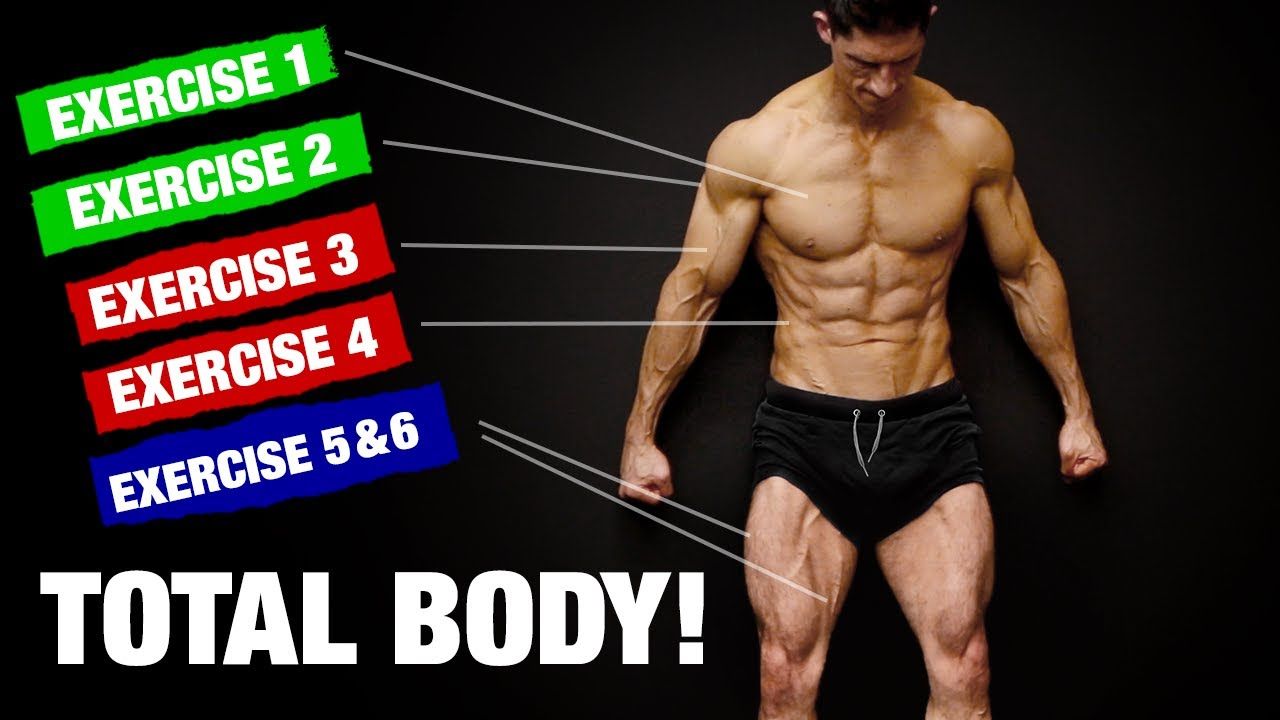
Working out at home can be a convenient and effective way to stay fit, but it’s crucial to prioritize safety to prevent injuries. Here’s a comprehensive guide to help you navigate the potential risks and ensure a safe and enjoyable workout experience.
Common Injuries and Prevention
Understanding common injuries associated with home workouts is essential for prevention.
- Muscle Strains and Sprains:These occur due to overuse, improper form, or sudden movements. To prevent them, warm up properly, focus on correct form, and gradually increase weight and intensity.
- Joint Pain:Improper form, excessive weight, and repetitive movements can lead to joint pain. Ensure proper form, use appropriate weights, and avoid overexertion.
- Back Pain:Incorrect posture, improper lifting techniques, and weak core muscles can contribute to back pain. Maintaining proper posture, using correct lifting techniques, and strengthening your core muscles are crucial.
Seeking Professional Guidance
While home workouts offer flexibility, seeking professional guidance is crucial for maximizing safety and effectiveness.
- Certified Personal Trainers:A certified personal trainer can assess your fitness level, design a personalized workout plan, and teach proper form, reducing the risk of injuries.
- Physical Therapists:If you experience pain or have pre-existing conditions, consulting a physical therapist is recommended. They can identify any underlying issues, recommend exercises, and guide you on safe movement patterns.
- Online Resources:Reputable websites and fitness apps offer educational resources and videos on proper form and safe exercise techniques. However, always cross-check information with a qualified professional.
Last Recap
Remember, consistency is key. Start with this 10-move full body workout at home and gradually increase the intensity and frequency as you progress. With dedication, you’ll see amazing results and build a stronger, healthier you! So grab your water bottle, find a comfortable space, and let’s get moving!

